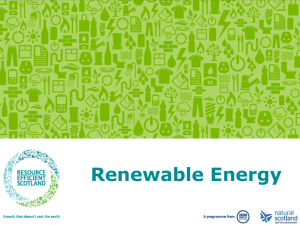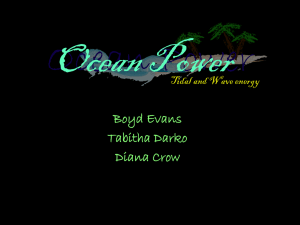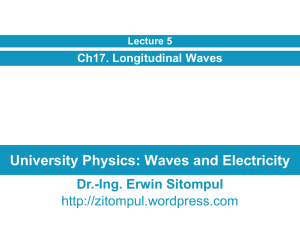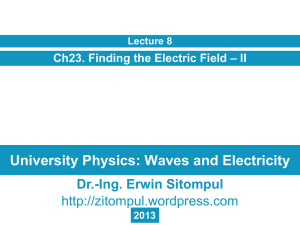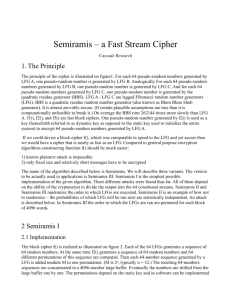kwatkins - Pacific Northwest Waterways Association
advertisement
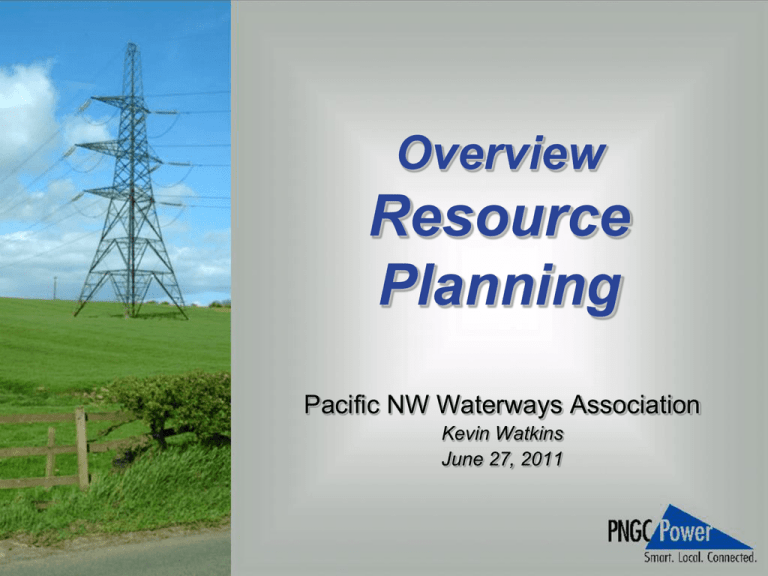
Overview Resource Planning Pacific NW Waterways Association Kevin Watkins June 27, 2011 Topics • Ocean Wave Energy Demo Project • Coffin Butte Resource Project • Technology tracking • Energy storage • High wind/high water About PNGC Power • Generation & transmission cooperative • 16 members/owners operating in 7 PNW states • JOE Joint Operating Entity ( “power pool”) • Smart Grid Investment Grant recipient Members/Owners About Electricity • Electricity type of energy (“electrical energy”) • Other types of energy “converted” to electricity – Conversion technologies: generators, P/V cells, etc. – Conversion “rate” = power (units: Watts W, kW, MW) – 1 MW = 1,341 Hp • Instantaneous balance! Supply (“generation”) = Demand (“loads”) Ocean Wave Energy Demo Project Ocean wave formation Sunlight >> Temperature & pressure differentials >> Winds (over Oceans) >> Ocean Waves Wave energy technologies 1st wave energy project (Spain) Ocean wave resource potential Estimated wave energy Oregon Coast Wave Energy Profile Project description • Developer: Ocean Power Technologies (OPT) (PNGC Power providing funding, support, PPA) • Generation capacity: 1.5 MW (10 -150 KW buoys) • Schedule – Phase 1: (Sept 2011): one buoy for data collection – Phase 2: (August 2012): deploy nine more buoys; interconnect w/Douglas Electric; begin ~2 year demo Project location Buoy dimensions (feet) DRAWING NOT TO SCALE DIMENSIONS SHOWN IN FEET POWERBUOY 50 ’ PRELIMINARY DRAWING 50’ CATENARY LINE – 117’ SUBSURFACE FLOAT 20.3’ MOORING BRIDLE 50 ’ 105.1’ TENDON LINE E: 12/2/2009 Rev 3 24.6’ ©2009 Ocean Power Technologies, Inc. ASSUMED DEPTH - 200’ ANCHOR Objective: project information • Resource characteristics – Availability (seasonal, daily, etc.) – Compatibility with other uses – Predictability • Conversion technology performance – Operations (efficiency, generation during storms, etc.) – Reliability (forced outages, maintenance, etc.) – Cost Project opportunity? • • • • • Verify renewable resource Confirm generation predictability Define O&M cost characteristics Simplify integration (for direct generation-to-member connections) Provide “scalable” capacity additions – Shorter development cycle (e.g.,18-24 months) – Smaller capacity additions (e.g.,10-20 MW) Coffin Butte Resource Project Biomass energy: landfill gas (“LFG”) • LFG formed via biological process: methanagenic anaerobic bacteria • Biomass methane (CH4) • LFG methane content: 50-55% • Very challenging collection & combustion control processes Process LFG electricity Overview • Owner: Power Resources Cooperative (PRC) • Description – – – – • 5.7 MW landfill gas-to-energy facility Technology: Advanced IC engines Commercial operations: October 1995 (2.5 MW) Phase II operations: October 2007 (+ 3.2 MW) Phase III planning – Timing: 2012-2013? – Major issues: fuel supply & air quality permitting CAT 3520 engine-generator (1.6 MW) Technology Tracking Compressor Station Heat Recovery Technology illustration Preliminary evaluation • PRO – No incremental CO2 production – Siting & permitting relatively straightforward – Remotely operated & monitored (with organic working fluid) • CON – Coordination with pipeline owner/operator – Non-dispatchable generation – Interconnection & integration requirements Biomass Cogeneration Biomass resources • Type: Residue fuels (“woody biomass”) – Mill residues – Unused logging slash – Forest thinning residues • Issue: Supply – Competing uses (e.g., landscaping materials) – Implementing long-term activities on public lands – Sensitivity to prevailing economic cycles • Risk: new regulations re: biomass burning Cogeneration operations • Concept: co-generate with same fuel & systems – Electricity – Process steam • Shared costs – Fuel – Equipment – O&M • Major benefit Efficiency Cogeneration issues • Coordinate “steam” + “electric” loads • Allocation of costs & benefits Consistent reliability standards O&M staffing & practices Upgrade planning (e.g., electrical system only) Limited distance for steam transport Others! • • • • • Large-scale photovoltaic (PV) PRO • Very positive public perception • Sustainable (vs. more limited “renewable” term) • No operating CO2 cost/penalty exposure • Good coincidence with summer-peaking loads • Costs largely fixed (e.g., debt service) CON • Intermittent output • Poor coincidence with winter-peaking loads • Large land area requirement (500 acres (380 football fields!) for 50 MW facility) • Regulation & load following reserves (costs??) Energy storage Energy storage overview Concept: electricity • Functions • – – – – “storable” energy Operational support “Firm” intermittent resources Optimize market transactions Integrate with Smart Grid operations – Others! Pumped hydro Pumped hydro (cont.) Batteries Compressed Air Energy Storage High wind/high water Wind generation capacity High wind High water Spill Issues! System stability Transmission access Operational priority COSTS Next step? Thank you! Courtesy NASA Supplemental Information Wave development Wave motion Waves “breaking” at shoreline Milankovitch Cycles Carbon Dioxide (CO2) Levels Hydrogen Hub Feasibility Study • Concept Renewable energy => Ammonia synthesis (fuel) => Dispatchable generation • Conclusions – Ammonia synthesis/generation technically feasible – Much uncertainty! • NW Hydrogen Alliance seeking demo project $ Modular Nuclear Study Committee Energy Northwest study group coordination • Objective: preliminary technology evaluation • – Modularity/scalability – Light-water reactor design – Can obtain NRC Design Certification? • Key issues – – – – USDOE cost sharing Cost-effectiveness Waste fuel management Others! Typical modular design (45 MW) Next steps • Select preferred vendor to continue “due diligence” study • Better define overall economics • Seek USDOE cost-sharing – Combined Operating License (estimated $50M!) – Reference plant • Increase communication activities Challenging maritime conditions Balancing Authorities (formerly “Control Areas”) PNW transmission constraints Blue are internal to BPA system (flowgates); red are interchange constraints Environmental Dispatch Interchange


